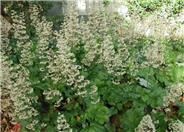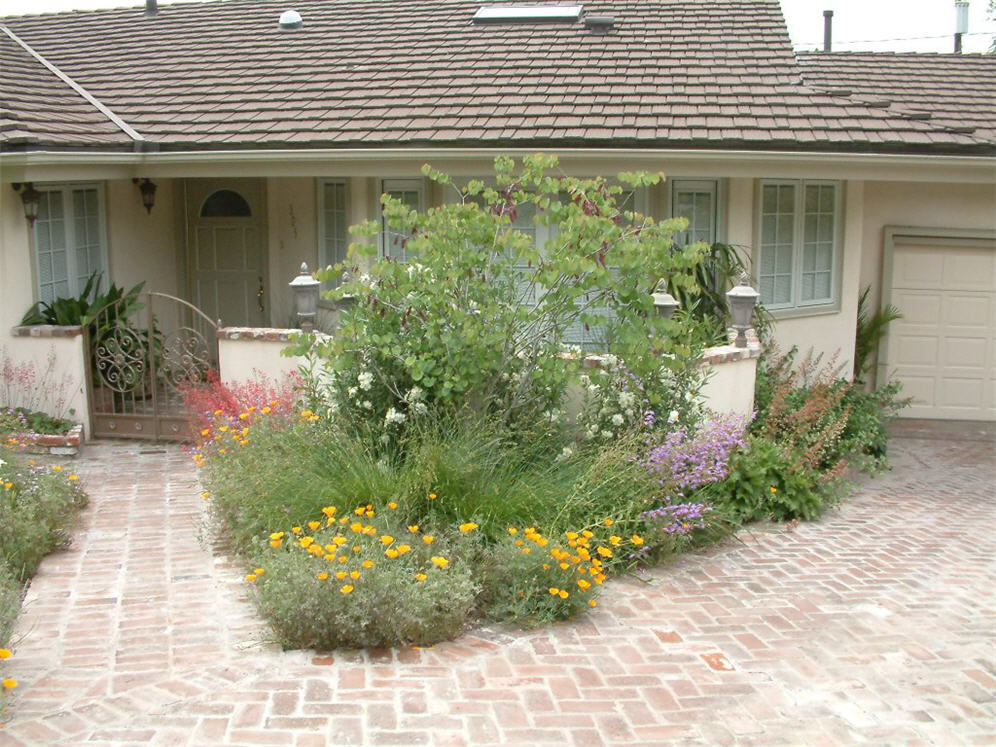
Common name:Western Redbud
Botanical name:Cercis occidentalis
This deciduous shrub ranges from 6'-20' tall and 10'-15' wide. It is desirable for its magenta spring flowers, yellow to red fall color, and dangling winter seed pods. It is tolerant of many soil types, drought and oak root fungus. It attracts hummingbirds and butterflies. The Western Redbud can be found statewide in CA in the foothills below 4500' elevations in chaparral and woodland communities.

Common name:Island Alum Root
Botanical name:Heuchera maxima
This large leaf native Heuchera from which many hybrids have been derived will reach about 3' tall in bloom and has deep green leaves with white flowers with a touch of pink.

Common name:Coral Bells
Botanical name:Heuchera sanguinea
Tufts of round leaves 2"-3" wide with scalloped edges accent this plant. It also produces wiry stems to 24" tall with open clusters of reddish pink, bell-shaped flowers.

Common name:California Poppy, Golden Poppy
Botanical name:Eschscholzia californica
This small annual (sometimes acts as a perennial) plant will grow to less than 1' tall and has light, small blue green leaves with gold and orange flowers that bloom in spring and summer.

Common name:Royal Beard Tongue
Botanical name:Penstemon spectabilis
This shrubby perennial produces spectacular, blue purple, tubular flowers on spikes, which is quite attractive to hummingbirds. Royal Beard Tongue can reach a mature size of about 3'-4' tall and wide. It is native to Southern California. It is best planted in the fall and blooms from spring through summer.
| Designer: Armstrong & Walker Land. Arch. | Redbud Entry |
Photographer: GardenSoft |
Soils and Compost:
Physical weed control, including mulching, or hand removal protects the watershed from harmful chemicals.
Water Saving Tip:
Check your irrigation system for breaks, leaks and problems once a month.
Integrated Pest Management:
Remove irrigation water and fertilizer from areas where you don't want weeds to grow.

